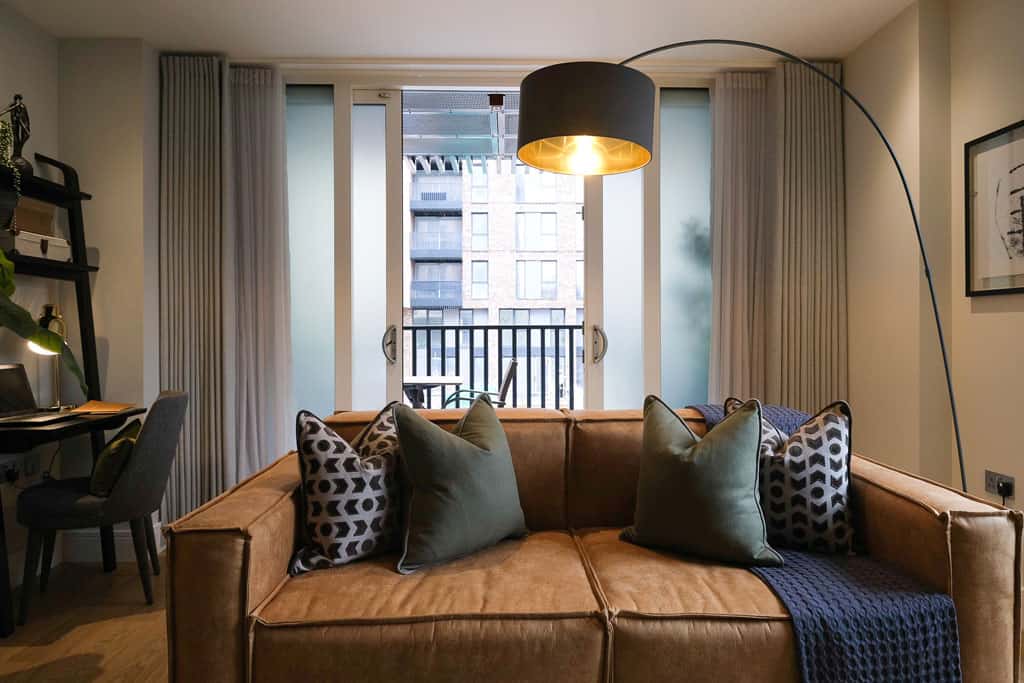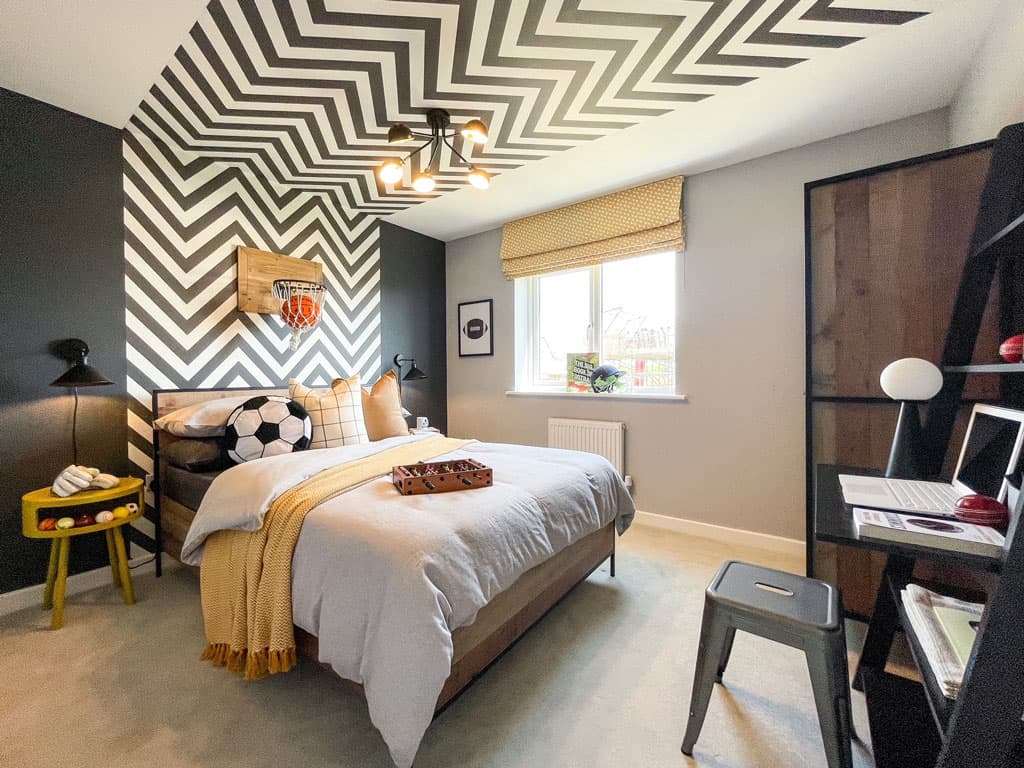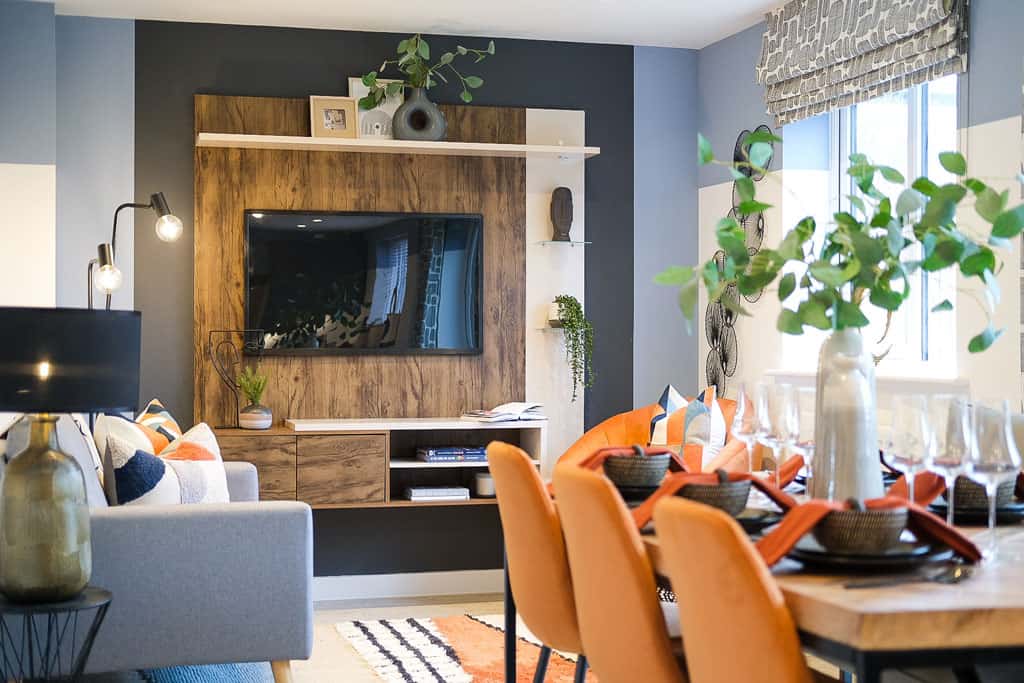
Q&A with Steve Hird, director and co-founder, Edward Thomas Interiors, a specialist interior designer for new homes

1. Is there anything you would recommend first-time buyers do from an interior design perspective before they move in, while they wait for their new build to be ready?
Start scrolling social media. Instagram and TikTok are great resources for current interior trends and you can find plenty of home bloggers and influencers documenting their interior design journeys. Similarly, start following designers and companies with products you admire so you can start collating a mood board of furniture, fabrics, and accessories – you can do this on Pinterest or in a scrapbook!
2. Conversely, is there anything you would suggest they shouldn’t do before they move in?
Don’t panic buy! Just because there’s a sofa sale or a piece of furniture is half price doesn’t mean you should go for it. Take your time, if you have the chance to walkthrough the property with your builder then you can take measurements, otherwise wait until you’ve moved in and can get a feel for the space and how you use it. Start by gathering essentials like utensils, crockery, cutlery, bed linen and towels.
3. What should be the first thing they do in respect of interior design when they move in?
Focus on the key rooms, places you’ll spend the most time like your bedroom and living room. Knowing you have sanctuaries for sleeping and relaxing will help take the pressure off. Kitchens, home offices, spare rooms and bathrooms can all follow. Look at your mood boards for these and double check they still work, then you can start searching and trying out products.
Also, be space smart. The majority of today’s new build homes follow an open plan layout, particularly on the ground floor, so our advice is to avoid creating pinch points with bulky objects or furniture. This ensures the home’s logical flow can still be followed.

4. Do you have any tips relating to measuring up or planning out a room layout?
Start by drawing or sketching out the room’s footprint. Separately draw out pieces of furniture that you’re considering and move them around within the footprint to see how they might fit best. Do this for any room where you’re unsure of the sizing. There are apps to help you do this too.
5. In your opinion, what are the absolute basic essentials each room should have?
Window dressings, so curtains or blinds; carpets or floorcoverings; light fittings and furniture to suit. So, if it’s a living room, a sofa and side or coffee table, a bedroom obviously needs a bed and bedside tables, kitchen/diner needs table and chair. Accessories like cushions, throws, rugs, floor or side lamps, wall art can all be added in layers as you live in the space.
6. How should those moving into an apartment approach interior design?
To create space for different activities e.g. relaxing, dining, home working, an apartment’s main living area can be subdivided obviously with a screen or partition, or more subtly with wall treatments such as paint blocking, panelling or feature wallpapering.
For slim or narrow rooms, try to avoid overcrowding by thinking vertically! TV’s, drinks stations and shelving can all be wall-mounted while bar storage, hanging planters or even pot and pan racks can be added to ceilings as stylish storage solutions.
7. How can lighting be used around the home?
Lighting is important and often overlooked. Good lighting can really help a space feel bright and inviting, especially in rooms with fewer windows. Don’t just focus on ceiling light fittings, consider uplighters, floor or wall lamps, table lamps, recessed or cabinet lighting. They also don’t have to be expensive, there are online and high street retailers with some great options including lamp shades and fittings that fit onto a standard new build pendant.

8. In terms of furnishing, are there items you’d suggest saving on, but others you’d say absolutely should be splurged on?
Going back to my earlier point about focusing on the rooms where you’ll likely spend the most time, it’s wise to invest in a good quality sofa and bed, you want these to last and be comfortable. For the rest of your furniture, consider dividing into ‘must-haves’ and ‘nice-to-haves’, you want pieces that are functional to start off with that can then be upgraded or replaced with more fashionable or decorative ones in time.
Don’t forget that fast furniture is similar to fast fashion. It costs less, but you have to replace it quicker. By investing in second-hand furniture you can achieve surprising results more sustainably. Painting, reupholstering, découpaging or stencilling all, or part, of a piece of furniture can really give a new lease of life, think chair seat backs, table legs or cupboard doors. Similarly, replacing drawer or door handles on old sideboards or dressers is a great way to express personality.
9. Where would you recommend first-time buyers shop for bargains or any particular furnishings?
Many high street stores have popular interiors items, check out TK Maxx, H&M, Dunelm, Matalan, Next Home or Zara Home as well as the obvious department stores like Ikea, John Lewis, Debenhams and House of Fraser that have ranges to suit different budgets. Online retailers such as Wayfair and Etsy have excellent pieces too. Don’t forget the supermarket homeware departments either!
10. Finally, is there any additional advice we’ve not covered for first-time buyers which you would like to share?
As with any new home, the point is to enjoy it so build rooms up over time, don’t rush to do everything at once or feel pressured into keeping up with friends. Don’t be scared or afraid to make mistakes, keep evolving and adding new pieces as your tastes change, as you collect or inherit. There are no rules.

